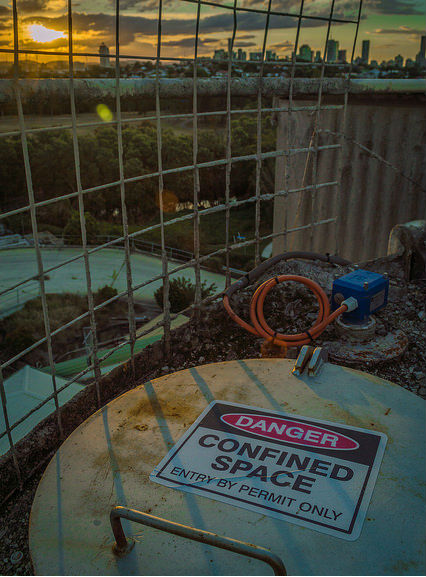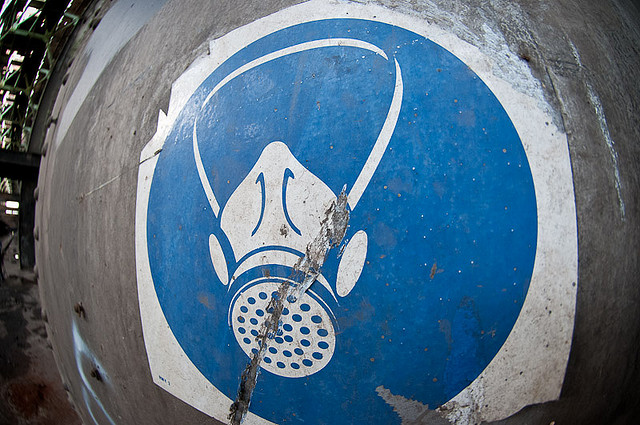Control Measures for Confined Space Safe Work Procedure

In previous articles on the SafeWorkPro Blog, we’ve looked at the risks and hazards of working in confined spaces. But what good is a risk if there no control measures?
Below is an extensive list taken the codes of practiceby Safe Work Australia, that outline the various control measures available to construction workers and PCBU’s involved in high risk construction work. Before conducting work in a confined space, it is strongly recommended that all duty holders consult this list, and more importantly, the relevant codes of practice. The control measures outlined by Safe Work Australia include:
Entry permit: A PCBU must not allow or direct a worker to enter a confined space to carry out work unless the person has issued a confined space entry permit for the work. A space entry permit must be completed (in writing) by a competent person and specify:
- specify the confined space to which the permit relates record the names of persons permitted to enter the confined space and the period of time that the work will be carried out
- set out risk control measures based on the risk assessment, and contain space for an acknowledgement that work in the confined space has been completed and all persons have left the space.
Isolation: All potentially hazardous services should be isolated prior to any person entering the confined space. These services may include piping, vents, drains, conveyors, service pipes, machinery, plant, electrical equipment or fire protection equipment.
- Physically tag, lock, close or blank hazardous service
- Removal of valve, spool piece or expansion joint in piping that leads to confined space
- Remove energy source to any agitator, fans or other moving parts in a confined space (if energy source cannot be removed consider choking, wedging, chaining or removing any moving parts)
- Reduce any device with stored energy including hydraulic, pneumatic, electrical, chemical, mechanical, thermal or other types of energy, to a condition of zero energy
Atmosphere conditions: a safe atmosphere has a safe oxygen level, is free of airborne contaminants o has concentrations below their allowable exposure standard, has concentrations of flammable gas or vapour below 5% of its LEL. Control methods include:
- Purging: use an inert gas, such as nitrogen, to clear flammable gases or vapours out of the confined space. Following purging, the space should be ventilated with sufficiently fresh air and any removed contaminants should be expelled to a location that presents no further risk. Before conducting work in the confined space, atmospheric testing should be carried out
- Ventilation: may be necessary to establish and maintain a safe atmosphere and temperature for as long as work is conducted in the confined space
- Natural ventilation: only if the confined space has sufficient openings and the source of fresh is not contaminated by any exhaust or other pollutants
- Mechanical ventilation: use local exhaust ventilation (LEV) for localised contaminant generation (eg extraction of welding fumes). LEV should be monitored during operation and have controls clearly identified, tagged and protected
- Dilution ventilation: air must be introduced in way that ensures effective circulation through the confined space with openings, contamination level and area layout put into consideration

Respiratory protective equipment (RPE): if it is not reasonably practicable to ensure a safe oxygen level, remove the confined space of contaminants or when there is an unknown concentration of a hazardous substance is present, then respiratory protective equipment must be worn.
- AS/NZS 1715: Selection, use and maintenance of RPE
Safety monitoring: a standby person must be assigned to the vicinity before a worker enters a confined space to continuously monitor the wellbeing of those inside the space.
- The standby person should be aware and understand the risks inside the confined space and be able to recognise signs and symptoms of distress that workers in confined space may experience (reg 69)
- The standby person should remain outside the confined space and do not other work that impedes their monitoring duties
- A required rescue and safety equipment should be available to standby person
- The standby person should have the authority to order an evacuation and never enter the space to attempt a rescue

